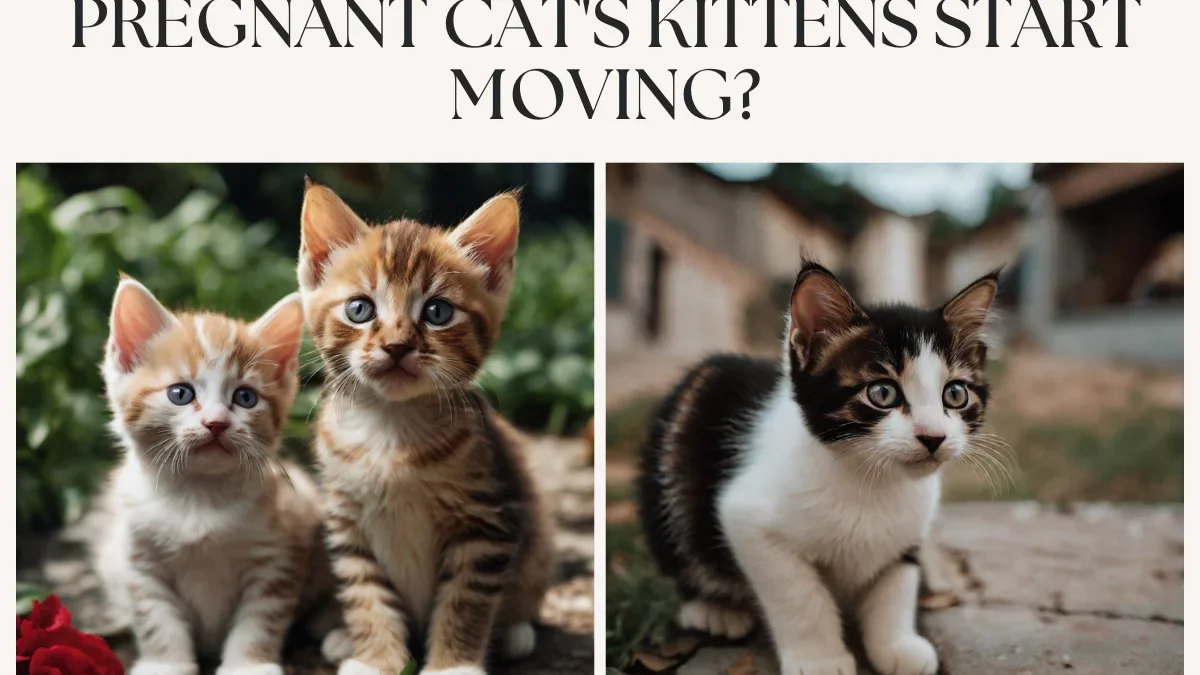As a cat owner, one of the most exciting moments during your cat’s pregnancy is feeling those tiny kittens moving inside her belly. It’s a sign that your furry friend’s due date is approaching, and soon you’ll have a litter of adorable kittens to cuddle and care for. But when can you expect to feel those little bundles of joy moving around? In this blog post, we’ll answer the question on every cat owner’s mind: how much longer until your pregnant cat’s kittens start moving?
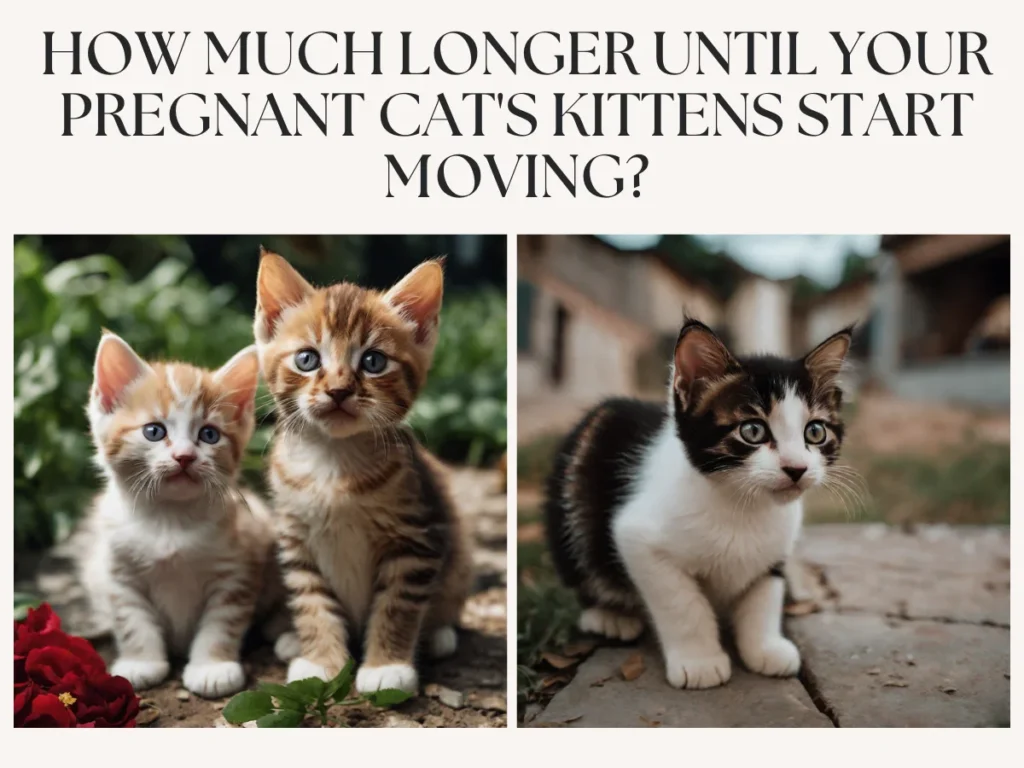
How can you tell a cat is in pregnancy?
If you suspect that your furry friend might be pregnant, it’s important to be able to recognize the signs of feline pregnancy. While a trip to the vet for confirmation is always recommended, there are a few signs that can help you determine whether or not your cat is expecting kittens.
One of the first things you may notice is a change in your cat’s nipples. Around three weeks into the pregnancy, her nipples will become pinker and more prominent. They may even start to secrete a milky fluid, known as colostrum, which is important for the kittens’ early development.
Another sign to look out for is weight gain. Pregnant cats typically start to gain weight around two to three weeks after mating. You may notice that her belly is getting rounder, and she may have an increased appetite. However, it’s important not to confuse weight gain due to pregnancy with weight gain due to overeating, so monitoring her diet is crucial.
Behavioral changes can also indicate pregnancy. Your usually energetic and independent cat may become more affectionate and seek more attention from you. She may also become more vocal or exhibit nesting behaviors, such as searching for a quiet and comfortable spot to give birth.
In some cases, you may even be able to feel the kittens’ tiny movements within her belly. However, this can be more difficult to detect, especially if it’s your first time experiencing a pregnant cat. It’s best to leave the belly palpation to the professionals, as mishandling can be dangerous for both the mother and the unborn kittens.
Overall, recognizing the signs of feline pregnancy is essential for ensuring the well-being of your pregnant cat and her soon-to-be-born kittens. By paying attention to changes in her nipples, weight, behavior, and seeking professional veterinary care, you can prepare for the arrival of the little bundles of joy.
Understanding the Cat Pregnancy Timeline
If you’re a cat owner, it’s important to understand the various stages of your cat’s pregnancy. This will help you anticipate when important milestones, such as feeling the kittens move, will occur.
The cat pregnancy timeline can be broken down into three main stages: the gestation period, the final weeks of pregnancy, and the onset of labor. The gestation period, which is the time from conception to birth, typically lasts around 63 to 65 days. However, keep in mind that this can vary by a few days depending on the individual cat.
During the first few weeks of the gestation period, there are no noticeable physical changes in your cat. It’s not until around three weeks into the pregnancy that her nipples will start to become pinker and more prominent, as mentioned earlier. This is a key sign that the kittens are developing inside her.
Around the fifth week, your cat’s belly will begin to grow larger as the kittens continue to develop. This is also when you may start to notice weight gain. By this stage, your cat’s appetite may increase, and she may require a higher-calorie diet to support the growing kittens.
In the final weeks of pregnancy, your cat’s belly will be noticeably larger, and her nipples may start to secrete milk in preparation for nursing. This is the stage where the kittens will begin to move more frequently inside the womb. It’s an exciting time as you anticipate the arrival of the little bundles of joy.
Understanding the cat’s pregnancy timeline is important for monitoring the progress of your cat’s pregnancy. By knowing what to expect at each stage, you can ensure that your cat receives the appropriate care and attention throughout her journey to motherhood.
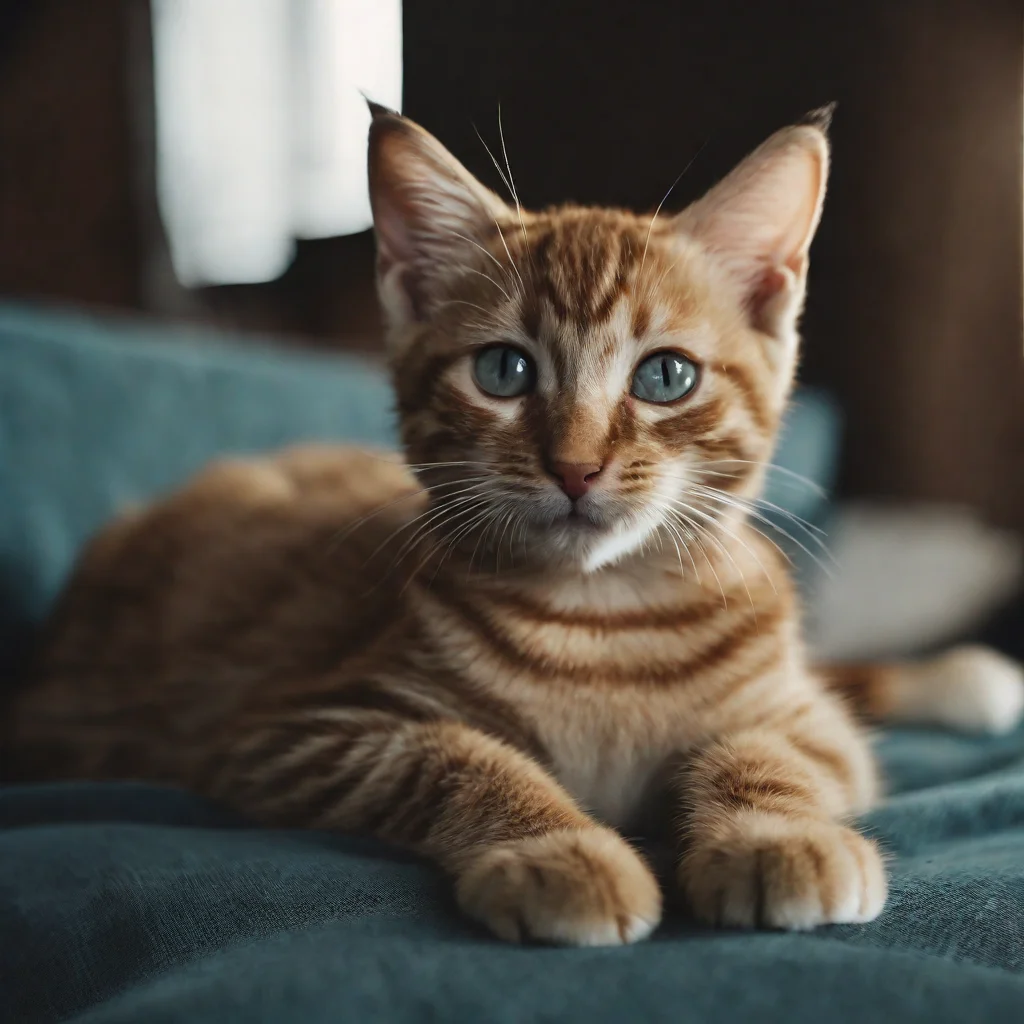
Recognizing the First Signs of Feline Pregnancy
If you suspect that your furry friend might be pregnant, it’s important to be able to recognize the signs of feline pregnancy. While a trip to the vet for confirmation is always recommended, there are a few signs that can help you determine whether or not your cat is expecting kittens.
One of the first things you may notice is a change in your cat’s nipples. Around three weeks into the pregnancy, her nipples will become pinker and more prominent. They may even start to secrete a milky fluid, known as colostrum, which is important for the kittens’ early development. This is a key sign that your cat is indeed pregnant and preparing for motherhood.
Another sign to look out for is weight gain. Pregnant cats typically start to gain weight around two to three weeks after mating. You may notice that her belly is getting rounder, and she may have an increased appetite. However, it’s important not to confuse weight gain due to pregnancy with weight gain due to overeating, so monitoring her diet is crucial.
Behavioral changes can also indicate pregnancy. Your usually energetic and independent cat may become more affectionate and seek more attention from you. She may also become more vocal or exhibit nesting behaviors, such as searching for a quiet and comfortable spot to give birth.
In some cases, you may even be able to feel the kittens’ tiny movements within her belly. However, this can be more difficult to detect, especially if it’s your first time experiencing a pregnant cat. It’s best to leave the belly palpation to the professionals, as mishandling can be dangerous for both the mother and the unborn kittens.
Overall, recognizing the signs of feline pregnancy is essential for ensuring the well-being of your pregnant cat and her soon-to-be-born kittens. By paying attention to changes in her nipples, weight, behavior, and seeking professional veterinary care, you can prepare for the arrival of the little bundles of joy.
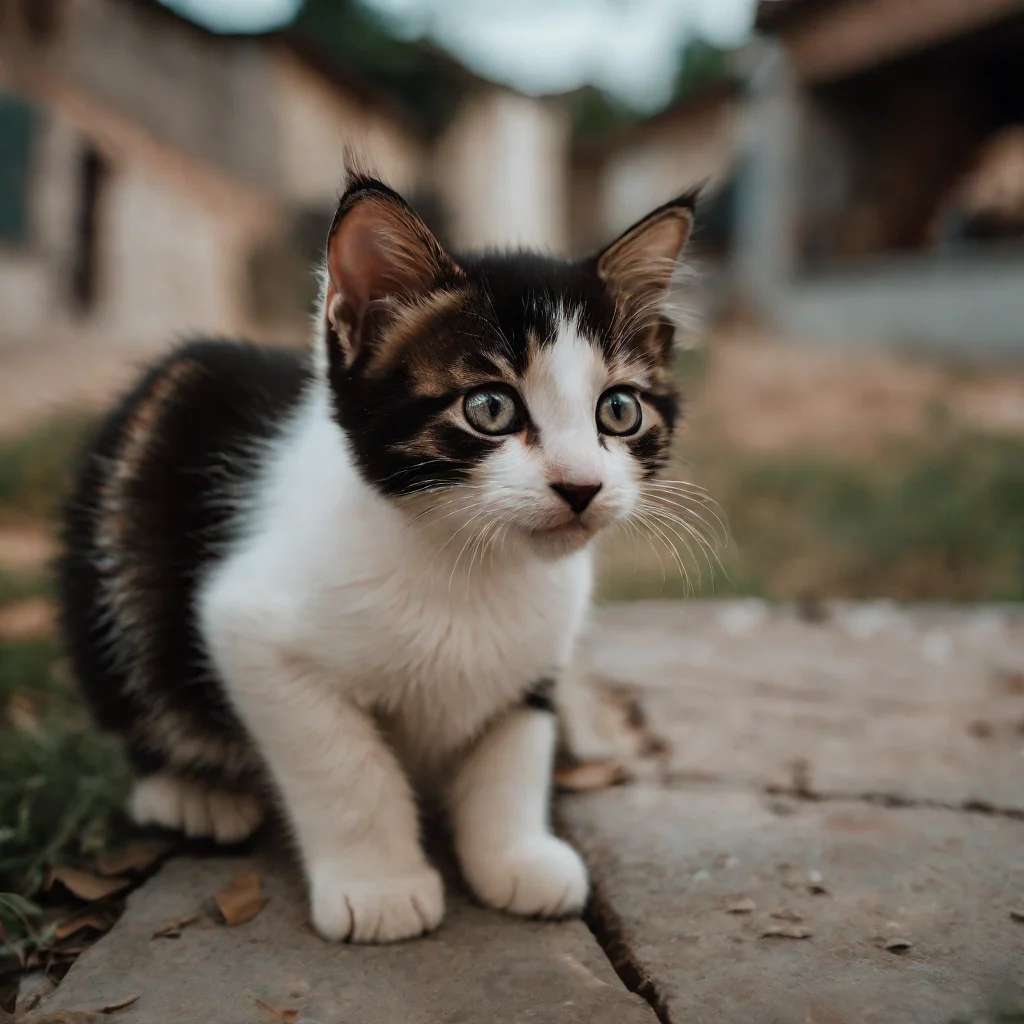
When Do Kittens Start to Move Inside the Womb?
One of the most fascinating aspects of a cat’s pregnancy is feeling the little bundles of joy moving inside the womb. But when exactly do kittens start to move inside the womb? This is a question that many cat owners eagerly anticipate the answer to.
Typically, kittens will start to move inside the womb around the fourth to fifth week of the gestation period. This is when the kittens’ limbs begin to develop, allowing them to start stretching and moving within the confines of the womb. At first, these movements may be subtle and hard to detect, but as the weeks progress, they will become more pronounced.
Feeling your cat’s belly for kitten movement can be an exciting and bonding experience. Gently place your hands on her abdomen, applying a light pressure. Be patient, as it may take a few tries before you can feel the movements. Keep in mind that every cat is different, and some may have more active kittens than others.
It’s important to note that excessive or prolonged lack of movement could indicate a problem, such as a stillborn kitten or fetal distress. If you’re concerned about your cat’s lack of movement, it’s best to consult with your veterinarian.
Feeling Your Cat’s Belly for Kitten Movement: Dos and Don’ts
Feeling your cat’s belly for kitten movement can be an exciting and bonding experience. It allows you to connect with your pregnant cat and get a sense of the tiny life growing inside her. However, it’s important to approach this process with caution and follow some dos and don’ts to ensure the safety and well-being of both the mother and the kittens.
First, let’s talk about the dos. When feeling your cat’s belly for kitten movement, it’s important to use gentle and light pressure. This will help you feel any subtle movements without causing discomfort or harm to your cat. Remember, her belly is sensitive, so it’s crucial to be gentle and respectful.
It’s also important to be patient. Feeling the kittens’ movements may not happen immediately, especially if it’s your first time experiencing a pregnant cat. Give it a few tries and don’t get discouraged if you can’t feel anything right away. Every cat is different, and some may have more active kittens than others.
Now, let’s move on to the don’ts. One of the most important things to remember is to never apply excessive pressure or force when feeling your cat’s belly. Mishandling can be dangerous for both the mother and the unborn kittens. Always prioritize their safety and well-being.
Additionally, it’s crucial not to poke or prod the belly. This can cause unnecessary stress and discomfort to your cat. Remember, your cat’s body is designed to protect and nurture her unborn kittens, so it’s important to respect her boundaries.
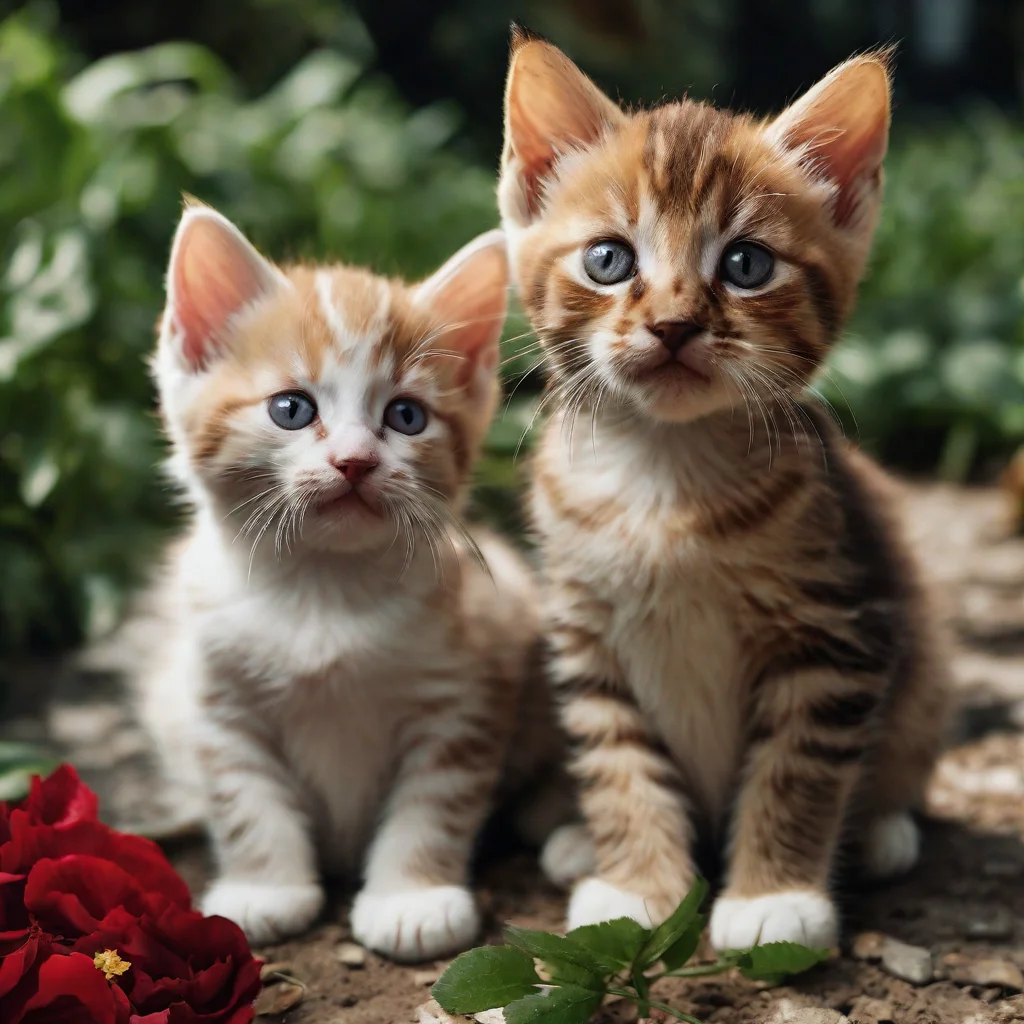
Changes in your Pregnant Cat’s Behavior when Kittens Start Moving
Once your pregnant cat’s kittens start moving inside her womb, you may notice some changes in her behavior. These changes are completely normal and are a result of the growing life inside her. Understanding and responding to these behavioral changes is crucial for providing the best care for your cat during this exciting time.
One of the most noticeable changes is an increase in restlessness and nesting behavior. Your pregnant cat may start to search for a quiet and comfortable spot to give birth. She may rearrange bedding or furniture, or even dig in certain areas to create a suitable nesting space. This is a natural instinct to ensure the safety and comfort of her kittens.
You may also notice a decrease in appetite as your cat’s due date approaches. This is normal and can be attributed to the growing kittens pressing against her stomach. However, it’s important to monitor her food intake and make sure she is eating enough to provide nourishment for herself and her unborn kittens. If you have concerns about her appetite, consult with your veterinarian for guidance.
Another change you may observe is increased grooming behavior. Your pregnant cat may spend more time cleaning herself, paying particular attention to her belly and genitals. This grooming behavior is a way for her to keep herself clean and prepare for the upcoming birth.
It’s important to create a calm and comfortable environment for your pregnant cat during this time. Provide her with a quiet and secluded space where she can rest and prepare for labor. Minimize disruptions and make sure she has access to food, water, and a clean litter box.
By recognizing and responding to these behavioral changes, you can help ensure the well-being and comfort of your pregnant cat as she nears labor and prepares to bring her beautiful kittens into the world.
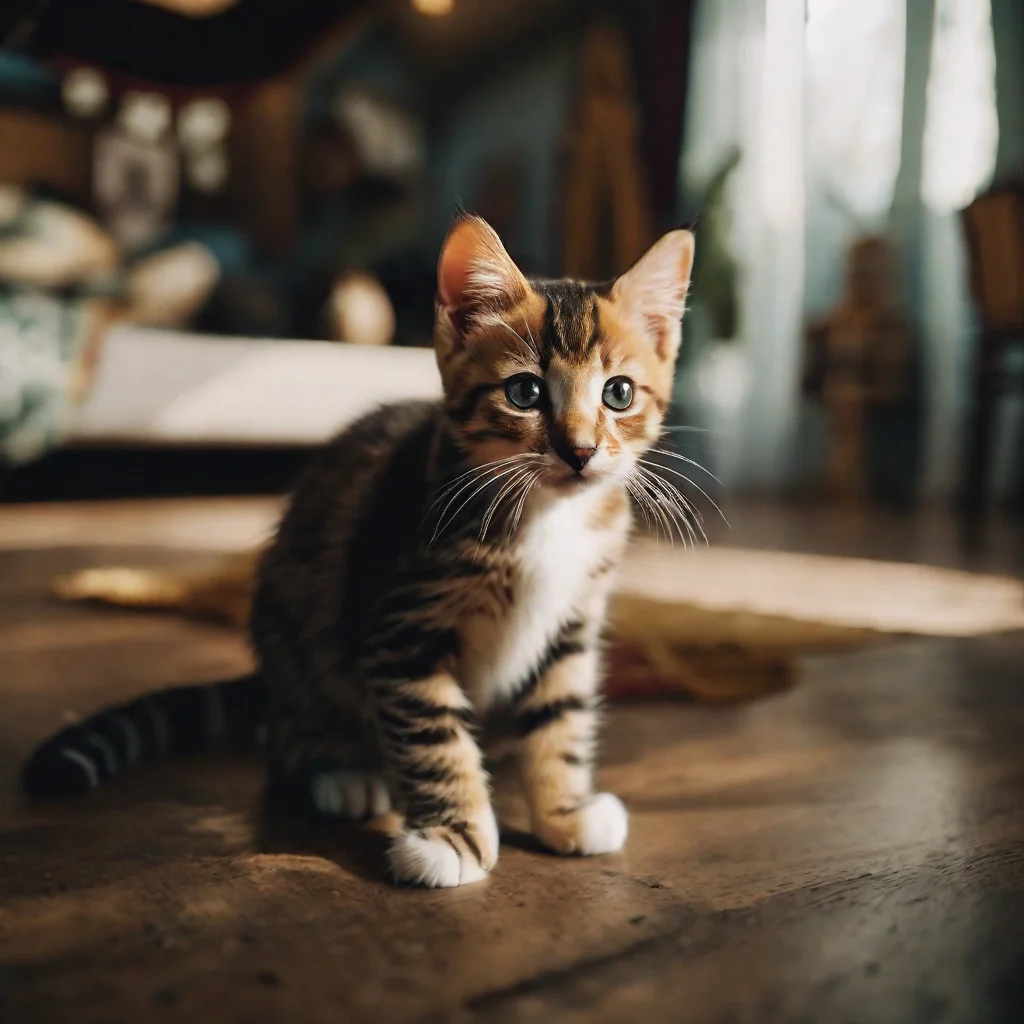
Taking Care of Your Pregnant Cat as She Nears Labor
As your pregnant cat nears the end of her journey, it’s important to provide her with the necessary care and support. This is the time when she needs you the most, so here are some tips to help you take care of your pregnant cat as she nears labor.
First and foremost, create a calm and comfortable environment for your pregnant cat. Provide her with a quiet and secluded space where she can rest and prepare for labor. Make sure the area is warm, as cats prefer a temperature of around 70-75 degrees Fahrenheit. Place soft blankets or towels in her nesting area to provide a cozy and comfortable spot for her to give birth.
Keep an eye on your cat’s behavior and appetite. As the due date approaches, she may become more restless and exhibit nesting behavior. She may also have a decrease in appetite, which is normal as the growing kittens are pressing against her stomach. However, it’s important to monitor her food intake and make sure she is eating enough to provide nourishment for herself and her unborn kittens. If you have concerns about her appetite, consult with your veterinarian for guidance.
During this time, it’s crucial to minimize disruptions and stress for your pregnant cat. Limit visitors and loud noises in the household, as this can cause unnecessary stress for her. Provide her with plenty of fresh water and make sure her litter box is clean and easily accessible.
Finally, be prepared for the arrival of the kittens. Have a birthing kit ready, which should include clean towels, scissors, and a heating pad. Familiarize yourself with the signs of labor, such as nesting behavior, restlessness, and contractions. If you notice any signs of distress or if your cat has been in labor for more than two hours without delivering a kitten, contact your veterinarian immediately.
By providing a calm and comfortable environment and being attentive to your pregnant cat’s needs, you can help ensure a safe and smooth labor for her and her precious kittens.
Conclusion
As the due date of your pregnant cat approaches, the anticipation of feeling those tiny kittens moving inside her belly builds. It’s an exciting time for both you and your furry friend. In this blog post, we’ve answered the question on every cat owner’s mind: how much longer until your pregnant cat’s kittens start moving?
Throughout this post, we’ve discussed the signs of feline pregnancy, the cat pregnancy timeline, and when you can expect to feel the kittens moving inside the womb. By recognizing the signs of feline pregnancy, such as changes in your cat’s nipples, weight, and behavior, you can ensure the well-being of your pregnant cat and her soon-to-be-born kittens.
Understanding the cat pregnancy timeline is crucial for monitoring the progress of your cat’s pregnancy and preparing for the arrival of the little bundles of joy. By knowing what to expect at each stage, from the gestation period to the final weeks of pregnancy and the onset of labor, you can provide the appropriate care and attention.
Feeling your cat’s belly for kitten movement can be an exciting and bonding experience. Remember to approach this process with caution, using gentle and light pressure. It’s important to be patient, as feeling the movements may take a few tries. And always prioritize the safety and well-being of your cat and her unborn kittens by not applying excessive pressure or force.
As your pregnant cat nears labor, it’s crucial to provide her with the necessary care and support. Create a calm and comfortable environment, monitor her behavior and appetite, and be prepared for the arrival of the kittens. By doing so, you can help ensure a safe and smooth labor for your cat and her precious kittens.
Now that you have a better understanding of when your pregnant cat’s kittens will start moving, get ready to feel those tiny bundles of joy in motion. Enjoy this special time with your furry friend and get ready to welcome the arrival of the adorable little kittens.
FAQs:
Q: How far along is my cat if I can see the kittens moving?
A: If you can see the kittens moving, your cat is likely in the later stages of pregnancy, typically around 40-50 days into the gestation period. At this point, the kittens are more developed, and their movements can be felt or seen through the mother cat’s abdominal wall.
Q: How do I know when my cat is about to give birth?
A: Cats usually display several signs indicating they are about to give birth. These signs can include restlessness, nesting behavior (seeking out a quiet and comfortable spot), increased vocalization, a decrease in appetite, and a drop in body temperature. Additionally, you may notice the cat’s belly becoming lower and her vulva swelling. If you observe these signs or have concerns, it’s best to consult with a veterinarian for guidance and support during the birthing process.
Q: How can you tell how far along a cat is?
A: Determining the exact stage of cat pregnancy can be challenging without veterinary assistance. However, there are a few indicators that can give you a rough estimate. These include changes in the cat’s behavior and physical appearance, such as weight gain, nipple enlargement and darkening, and abdominal enlargement. An experienced veterinarian can provide a more accurate assessment through palpation or ultrasound.
Q: Do kittens stop moving before labor?
A: It is not uncommon for kittens to move less or appear less active shortly before labor. This reduced movement is often attributed to the restricted space within the mother cat’s womb as the kittens grow. However, if you have concerns about your cat’s pregnancy or notice a significant decrease in movement, it’s important to consult with a veterinarian for a professional evaluation to ensure the health and well-being of both the mother and her kittens.
Related Reads:

